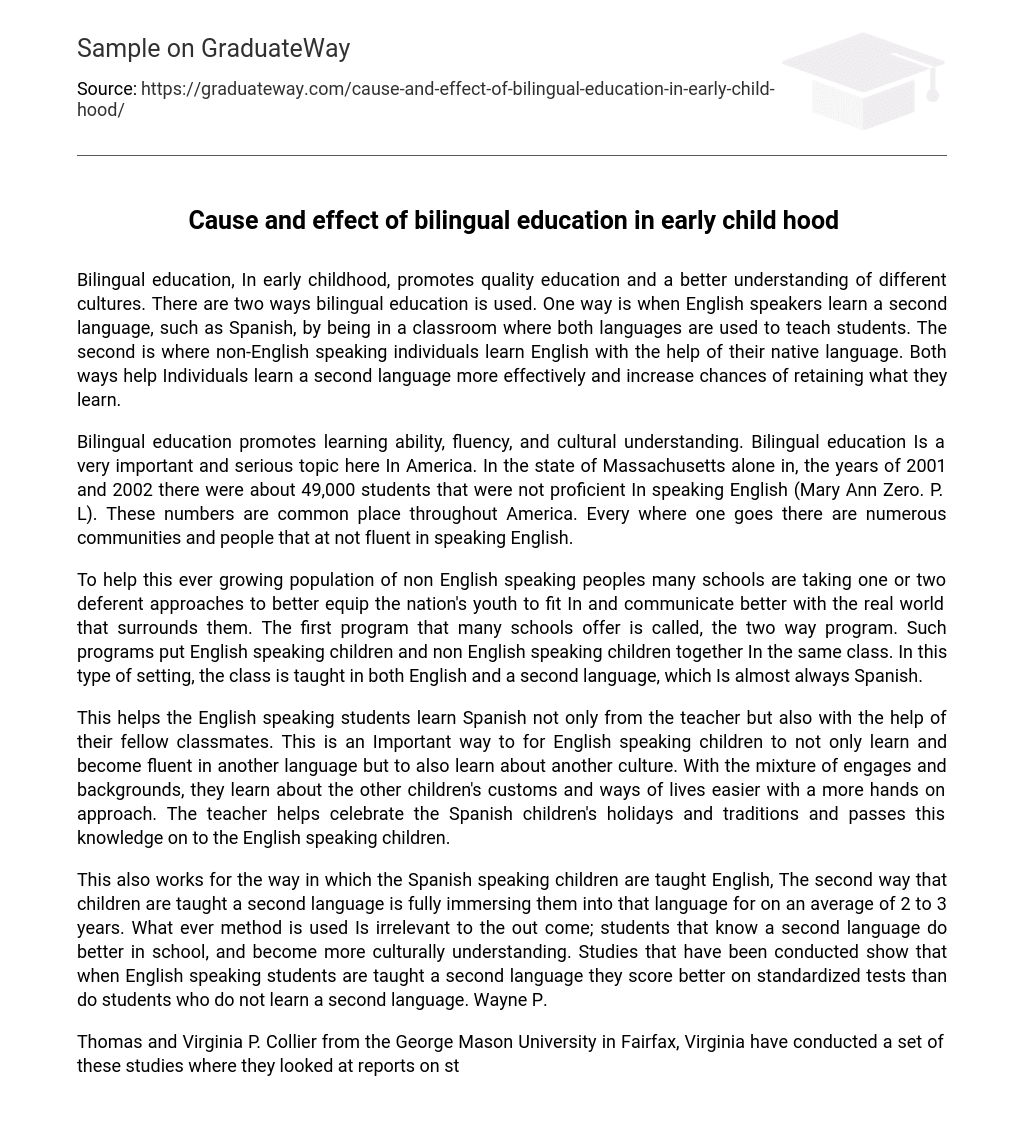Bilingual education in early childhood serves to enhance the quality of education and foster a deeper appreciation for diverse cultures. There are two approaches to implementing bilingual education. The first involves English-speaking individuals learning a second language, like Spanish, in a classroom setting where both languages are utilized for instruction. The second approach supports non-English speakers in acquiring English proficiency by incorporating their native language in the learning process. Both methods are instrumental in facilitating more efficient second language acquisition and improving long-term language retention.
Bilingual education plays a crucial role in enhancing learning skills, fluency, and cultural comprehension. It is a significantly significant topic in the United States. In the state of Massachusetts alone, during the years 2001 and 2002, there were approximately 49,000 students who lacked proficiency in English speaking (Mary Ann Zero. P. L). These statistics are widespread throughout the country, with numerous communities and individuals struggling to communicate effectively in English.
Schools are using different strategies to assist non-English speakers in integrating and communicating effectively. One popular method is the two-way program, which combines English-speaking and non-English-speaking students in one classroom. This approach involves teaching in both English and another language, typically Spanish.
English-speaking students can acquire Spanish language skills not only from their teacher but also from their classmates. This is essential for achieving fluency and gaining insights into another culture. Interacting with peers from diverse backgrounds enriches their understanding of customs and lifestyles. Furthermore, the teacher fosters an appreciation for Spanish children’s holidays and traditions, thus sharing this knowledge with English-speaking students.
This method also applies to the way Spanish speaking children are taught English. Another approach for teaching children a second language is through complete immersion in that language for an average duration of 2 to 3 years. Regardless of the utilized method, the outcome remains consistent: students who possess knowledge of a second language demonstrate improved academic performance and acquire a deeper cultural comprehension. Research indicates that when English speaking students receive instruction in a second language, they surpass those who do not learn a second language in standardized tests.
Wayne P.
A study conducted by Thomas and Virginia P. Collier from George Mason University in Fairfax, Virginia investigated student records from 1982 to 2000. The study discovered that young students who received early second language instruction not only acquired it more rapidly and retained a greater amount of knowledge, but also excelled academically when learning English. Additionally, the study observed that non-English speaking students who initially learned foundational education concepts and reading skills in their native language found it less challenging to acquire English proficiency at a later stage.
In an article for USA Today, Stephen Crasher proposes that instructing subjects in a student’s first language has benefits for their intellectual growth and understanding of English instructions. This approach provides valuable knowledge that aids in the development of the English language. Additionally, the article emphasizes that children who receive initial instruction in their native tongue often achieve comparable or even higher levels of English proficiency compared to students taught solely in English.
The education of non-native English-speaking children benefits their language learning and cultural preservation. This is especially significant for parents with different ethnic backgrounds or who are immigrants. Additionally, it fosters diversity and cultural understanding among younger generations. Starting second language instruction early, often in kindergarten, ensures faster acquisition and better retention rates.
It is important for children learning English as a second language to focus on improving their speaking skills before progressing in their education. Regardless of the method used, young learners who learn second languages are better equipped to thrive in a global society that values diversity and cultural comprehension. Teaching children a second language early on not only enhances their understanding and appreciation of various cultures but also enhances their fluency, academic performance, and test-taking skills.





